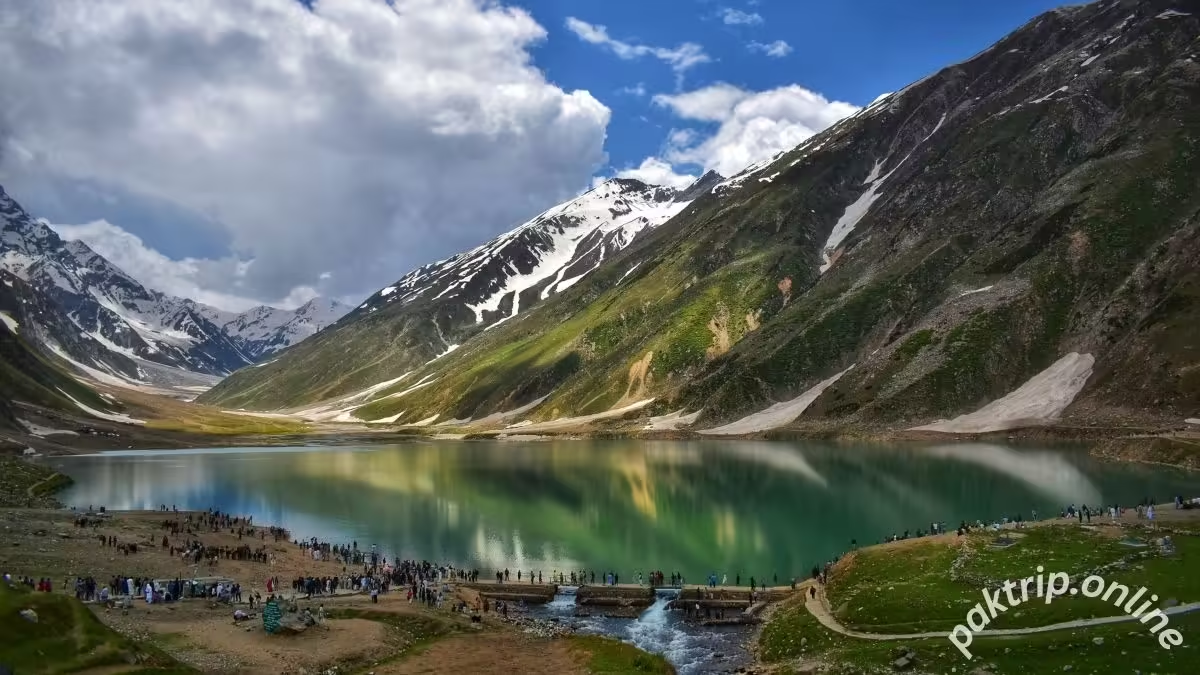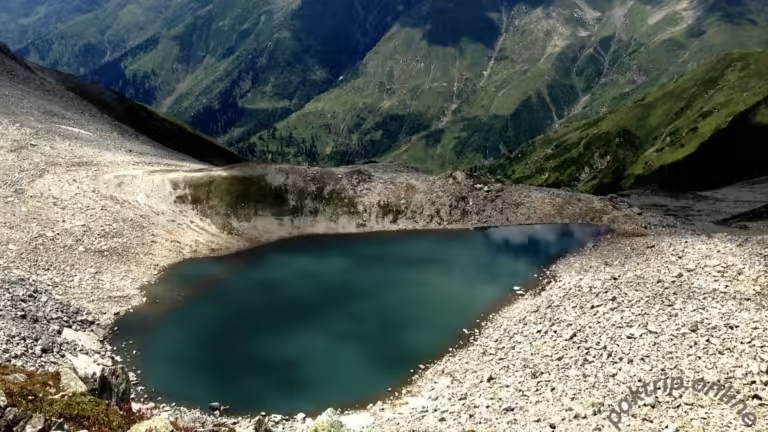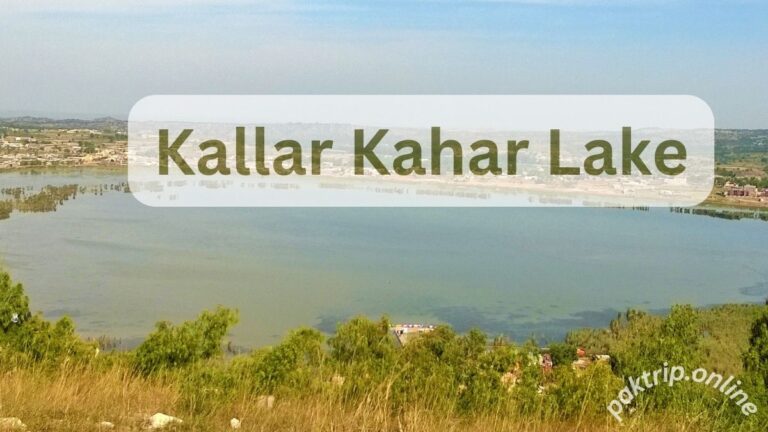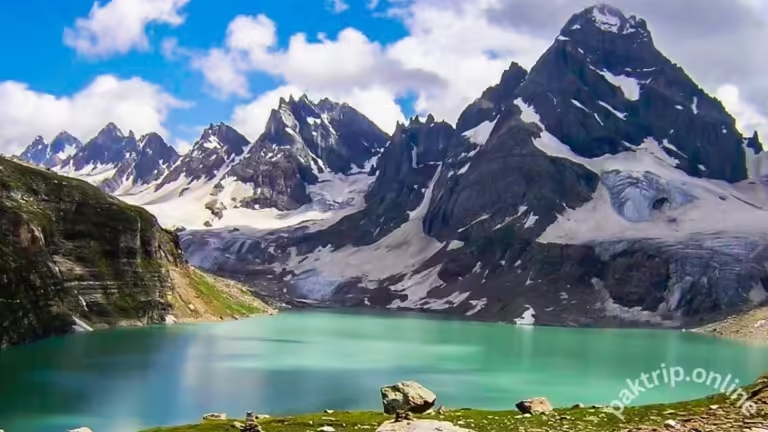Saif ul Malook Lake: The Enchanted Jewel of Naran, Pakistan
Nestled high in the majestic mountains of northern Pakistan lies Saif ul Malook Lake, a place known for its mesmerizing beauty, rich cultural history, and breathtaking scenery.
Located in Naran Valley within the Kaghan region, this lake draws thousands of tourists each year, making it one of Pakistan’s top travel destinations. Whether you’re exploring from nearby or traveling from afar, Saif ul Malook Lake offers an experience you won’t forget.
In this guide, we’ll walk you through everything you need to know about visiting Saif ul Malook Lake, from how to get there to what makes this destination so unique.
Why Saif ul Malook Lake is a Must-Visit Destination
Saif ul Malook Lake isn’t just a body of water; it’s a magical, almost mythical place that holds a special charm. The lake sits at an altitude of 10,578 feet above sea level, giving it a strikingly cool, refreshing atmosphere. Fed by glaciers, the lake’s crystal-clear, emerald-green waters are surrounded by towering snow-capped peaks, most notably Malika Parbat, the highest mountain in the region. The view of Malika Parbat alone is worth the journey, as it creates a stunning backdrop mirrored beautifully in the lake.
But the allure of Saif ul Malook goes beyond its scenery. This lake is famous in Pakistani folklore and is featured in the works of Punjabi Sufi poet Mian Muhammad Bakhsh, who tells a mystical love story associated with the lake, bringing in an added element of mystery and cultural significance.
Getting to Lake Saif ul Malook
Starting Point: Islamabad
Most visitors start their journey from Islamabad, Pakistan’s capital. The drive from Islamabad to Naran is about 282 kilometers and usually takes around 6-8 hours, depending on traffic and road conditions. You can reach Naran by private car, which typically costs between PKR 8,000 to PKR 9,000, or by public transportation, such as a bus, which costs around PKR 200-500.
Once you reach Naran, Lake Saif ul Malook is approximately 13 kilometers away. However, this journey isn’t one you can make in just any car you’ll need a jeep to navigate the rugged mountain roads that lead to the lake.
The Jeep Ride to Saif ul Malook
Jeep rides to Saif ul Malook Lake are available from Naran and cost around PKR 2,000 to PKR 2,500 for a round trip. These jeeps are specially designed to handle rough terrain, which includes steep inclines, rocky paths, and narrow passages. While the road conditions can be challenging, the drivers are highly experienced, and the ride is part of the adventure, adding a sense of thrill to the journey. It usually takes about 50 minutes to an hour to reach the lake from Naran by jeep.
What to Do at Lake Saif ul Malook
Once you arrive at Lake Saif ul Malook, you’ll find plenty of activities to enjoy. Here are some popular things to do that can make your visit even more memorable:
1. Boating on the Lake
One of the most popular activities at Saif ul Malook is boating. With life jackets provided on every boat, visitors can relax and enjoy the lake’s serene atmosphere. The boating fees are generally affordable, with prices ranging from PKR 500 for a half-circle trip to PKR 1,000 for a full circle. Boating on the calm, emerald waters of the lake provides a unique vantage point to take in the majestic views of the surrounding peaks, especially the famous Malika Parbat.
2. Horseback Riding Around the Lake
If you’re not in the mood for boating or hiking, consider taking a horseback ride along the lake’s shores. Locals offer horseback riding services, charging around PKR 200 to PKR 300, depending on the route. This is a fun and scenic way to explore the area, especially for families with children or anyone who prefers not to walk long distances.
3. Trek to the Tear Lake (Aansu Lake)
For those who crave more adventure, a challenging hike to Aansu Lake, or “Tear Lake,” awaits. The trek takes around 4 hours each way, and it’s recommended to hire a local guide for safety. The hike is quite steep and challenging, but the breathtaking view of Aansu Lake, which is shaped like a teardrop, makes the effort worthwhile. Remember, it’s important to start the trek early to ensure you return before evening.
4. Camping and Overnight Stays
Camping at Saif ul Malook is an amazing experience for those who want to spend a night under the stars. There is a designated area where tourists can set up tents, and there’s also a small hotel and tent village near the lake for those who prefer some comfort. Staying overnight gives you a chance to see the lake in different lighting from dawn’s soft glow to sunset’s vibrant hues. The air is crisp and fresh, and the lack of city lights makes the stars shine brighter, creating a magical night.
5. Enjoy Local Food and Tea
Local vendors around Saif ul Malook offer snacks, tea, and even traditional honey-infused tea, or “kehwa,” which is a popular choice among visitors. You can enjoy this warm treat for around PKR 150 while you take in the beautiful scenery. The vendors often share stories about the lake and local legends, adding a cultural touch to your visit.
The Legend of Saif ul Malook
What makes Saif ul Malook Lake even more enchanting is the legend attached to it. The lake is named after Prince Saif ul Malook, and according to the story, he fell in love with a fairy princess who lived there. The tale was beautifully captured by Sufi poet Mian Muhammad Bakhsh in his epic poem, “Saif ul Malook.” The lake and the surrounding mountains are often linked to this story, and locals are happy to share it with visitors, making your trip feel like a step into a fairy tale.
The tallest peak overlooking the lake, Malika Parbat, also plays a role in the tale. Known as the “Queen of Mountains,” Malika Parbat adds to the lake’s mystical atmosphere. Many believe that fairies and other mythical creatures reside around this peak, especially since the mountain often appears wrapped in clouds, creating a mysterious and almost magical appearance.
Tips for Visiting Lake Saif ul Malook
Here are some useful tips to help ensure your trip goes smoothly:
Best Time to Visit: The ideal time to visit is during the summer months (June to September) when the weather is warmer and the roads are open. In winter, heavy snowfall blocks the road to the lake and is inaccessible for most vehicles.
Dress Warmly: Even in summer, the temperature around the lake can be chilly, so bring warm clothing. It’s recommended to bring a warm jacket, a hat, and sturdy shoes.
Plan for Accommodation: If you plan to stay overnight, book your accommodation in Naran in advance, as it gets crowded during peak tourist season.
Respect the Environment: Lake Saif ul Malook is a protected area. Please avoid littering, as waste can take decades to decompose in this natural environment. Many parts of Pakistan, including Islamabad, have banned single-use plastic, so consider bringing reusable items with you.
Be Aware of Altitude: The high altitude can cause mild altitude sickness in some visitors. Take it easy, stay hydrated, and allow yourself time to adjust to the altitude if you feel lightheaded.
The Beauty and Significance
Lake Saif ul Malook’s beauty goes beyond words. It’s a place that captures the heart with its green waters, towering mountains, and mystical atmosphere. Visiting this lake is an experience that combines adventure, culture, and a deep sense of tranquility. The rich folklore and poetic history associated with the lake only add to its allure, making it a place that people want to visit again and again.
As you stand by Lake Saif ul Malook and take in the view of Malika Parbat in the background, you can feel the magic in the air. It’s easy to understand why so many people return to this enchanting place year after year. Whether it’s your first time visiting or your tenth, Lake Saif ul Malook will always have something new to offer.
Conclusion
Saif ul Malook Lake isn’t just a destination; it’s a journey into the heart of Pakistan’s natural beauty and cultural heritage. From the jeep ride to the lakeside adventures and the captivating legends that surround it, a visit to Saif ul Malook is unforgettable. It’s an experience that brings together the best of Pakistan’s landscapes, history, and hospitality. So, pack your bags, plan your trip, and get ready to experience the magic of Saif ul Malook Lake a place where legends live and nature’s beauty shines in its purest form.







